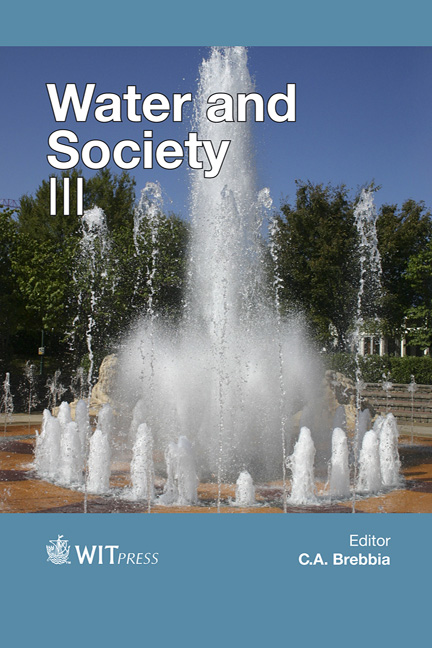Spatial And Temporal Variation In The Water Quality Of An Urban Drainage System In Ciudad Del Carmen, México
Price
Free (open access)
Transaction
Volume
200
Pages
12
Page Range
295 - 306
Published
2015
Size
426 kb
Paper DOI
10.2495/WS150251
Copyright
WIT Press
Author(s)
M. del R. Barreto-Castro, A. Delgado-Estrella, G. Acevedo-Olvera, E. Nuñez-Lara
Abstract
Anthropogenic activities generate pollutants that are often discharged, untreated, into bodies of water. The drainage system, known as the Caleta in Ciudad del Carmen, Mexico, is surrounded by an urban area and receives immense amounts of industrial and sewage discharge. Physicochemical analyses were conducted for the water and sediment samples taken along this drainage system to understand its hydrological dynamic and pollutant load. The drainage channel communicates with Terminos Lagoon, a Natural Protected Area, and the Gulf of Mexico. Water and sediment samples were taken at fifteen stations along the drainage channel during the three local seasons: northwinds (January); dry (May); and rainy (October). Physicochemical parameters (pH, temperature, salinity, dissolved oxygen, and total dissolved solids), as well as biological oxygen demand (BOD5), chemical oxygen demand (COD) and total suspended solids (TSS) were measured in the water samples. Heavy metals concentrations (Fe, Cr, Cu, Zn, Cd and Pb) were quantified in the sediment samples. No differences were observed in the physicochemical parameters between sample stations, although differences (P < 0.05) were observed between seasons. Dissolved oxygen levels at all stations and in all seasons were near or below hypoxia levels (< 2.0 mg/l). Biological oxygen demand and COD were highest during the rainy season, particularly near industrial effluent discharges. Heavy metals concentrations varied spatially, with higher levels nearest the drainage outlet and lower levels further inland. Lead and iron levels were extremely high, and all heavy metals concentrations far exceeded legal limits. The Caleta is clearly heavily impacted by discharge from the surrounding urban area containing pollutants generated by anthropogenic ativities. Any possible recovery of this drainage ecosystem will be contingent on treating and controlling any discharges into it.
Keywords
Terminos Lagoon, water quality, heavy metals, drainage, Ciudad del Carmen





